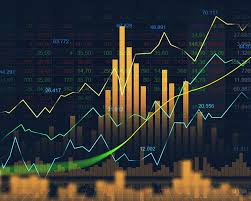Forex trading is all about leveraging and margin, and these two concepts are the backbone of any consistent and successful forex trader. When traders understand how to leverage and margin their trades, they can maximize their profits while minimizing the risks. In this blog post, I will explain in detail what leverage and margin mean and how they can be used to increase profitability.1. Understanding Leverage
Leverage is a tool used by forex traders that allows them to control a larger position than their initial investment. For example, if you’re trading with a 100:1 leverage, you can control $100,000 worth of currency with a deposit of just $1,000 in your trading account. Leverage is a double-edged sword that can magnify your gains and losses. While it can increase your chances of making a profit, it can also wipe out your account if not used wisely. So, it’s vital to understand the risks and rewards of leverage before using it.
2. Margin Requirement
Margin is the minimum amount of money a trader must deposit in their trading account to open a leveraged position. Margin is calculated as a percentage of the total value of the trade. For instance, if you’re trading a currency pair worth $100,000 and the margin requirement is 1%, you’ll need to deposit $1,000 in margin to open the trade. Margin is the collateral required by the broker to secure the trade and protect them from any potential losses.
3. How Leverage and Margin Work Together
Leverage and margin are synonymous; they both work together to enable traders to control larger positions with smaller investments. When you want to open a leveraged position, you’ll need to deposit the required margin. The more leverage you use, the less margin you need to open a trade. However, remember that high leverage can also increase your risk of losses. So, it’s essential to use leverage and margin wisely and always have a risk management plan in place.
4. Risk Management Plan
Having a risk management plan in place is essential for any forex trader, regardless of their level of experience. It includes establishing stop-loss orders, setting limits on the size of trades and the amount of capital risked on each trade. It also involves analyzing the market and knowing when to exit trades to minimize losses. These strategies help traders protect their trading accounts from catastrophic losses and keep them in the game for the long haul.
5. Final Thoughts
Leverage and margin are critical tools in Forex trading that can help you make more significant profits by trading larger positions with a smaller capital outlay. However, they can also increase your losses if not used effectively. It’s crucial to do your due diligence, understand the risks and rewards of using leverage and margin, and always have a risk management plan in place. Remember, even the best forex traders take losses, but it’s how they manage their risk that keeps them profitable in the long run.
Conclusion:
In conclusion, leverage and margin are two essential tools in forex trading. They allow traders to control more significant positions with a smaller investment. However, they are also double-edged swords that can increase your profits or your losses. To become a successful forex trader, it’s vital to understand how to leverage and margin, and to always have a risk management plan in place. When used effectively, leverage and margin can help grow your trading account and your profits consistently. It takes time and effort to master these concepts, but the rewards are worth it in the end.
Advanced Technical Analysis Techniques for Currency Pairs
Categories:


